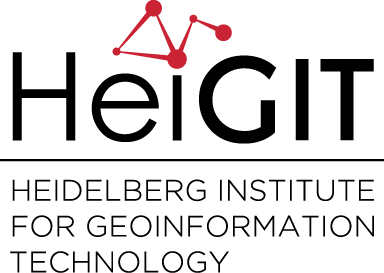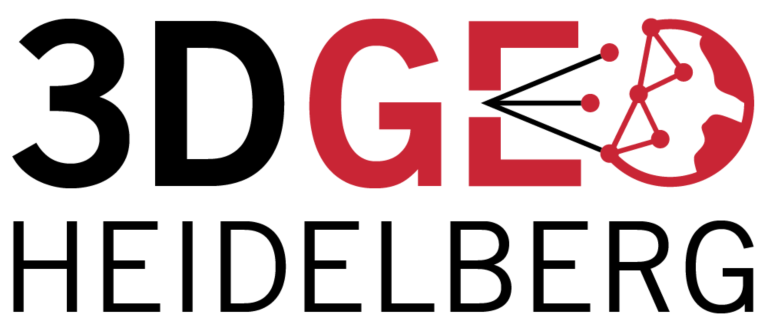Tag: 3DGEO
-
LOKI at vEGU 2021 on 26 and 29 April
Join us and many European researchers from the Earth, planetary and space sciences in the virtual European Geosciences Union (EGU) assembly from 19 to 30 April 2021! Are you interested in innovative methods and concepts applied to natural hazards? Then join our 2-minute talks on research within the LOKI project on Monday, 26 April, and…
-
SYSSIFOSS at EGU21 on 26 April
From 19 to 30 April 2021, European researchers from the Earth, planetary and space sciences are gathering in the virtual European Geosciences Union (EGU) assembly. On Monday, 26 April, two SYSSIFOSS presentations will be opening the block “Point clouds for forestry applications” in session BG11 – Remote sensing for forest applications. Dr. Fabian E. Fassnacht…
-
HELIOS++ v1.0.6 released
We are proud to present the newest HELIOS++ release, v1.0.6, with numerous bugfixes and support for the unique LiVOX scan pattern (using Risley prisms – the color indicates point indices and increases from blue to red): Furthermore, the Easter bunny left some Easter eggs in the ‘toyblocks’ scene: You can find the changlelog for the…
-
Open Data + Open Software – A perfect match
On 1st March 2021, the Swiss Federal Office of Topography (SwissTopo) released all official geodata according to the principles of “Open Government Data (OGD)”. With this step, Swisstopo is making large volumes of high quality geodata freely accessible. We are most excited about the 3D data, which includes digital surface models, digital terrain models and…
-
Press release: Understanding the Spatial and Temporal Dimensions of Landscape Dynamics
The research of the 3DGeo group is featured in a press release about Understanding the Spatial and Temporal Dimensions of Landscape Dynamics. The text illustrates how Heidelberg geoinformation scientists develop new computer-based method to analyse topographic changes. The described method is published in this article: Anders, K., Winiwarter, L., Mara, H., Lindenbergh, R., Vos, S.…
-
Fully automatic spatiotemporal segmentation of 3D LiDAR time series for the extraction of natural surface changes
When and where do changes occur in dynamic natural landscapes? A new method has been published that enables the automatic extraction of surface changes from entire time series of 3D point clouds. The developed method of spatiotemporal segmentation extracts changes regarding their surface change history, which makes it particularly useful for natural scenes that are…
-
HELIOS++ 1.0.0 Software & Preprint Release
The 3DGeo Research Group is proud to announce the release of their novel ray-tracing based laser scanning simulator HELIOS++! HELIOS++ is a general-purpose simulation software for virtual laser scanning data acquisition. Such data can be used to complement real data in many use cases. Some examples include the generation of training data for machine learning,…
-
4D change analysis for improving our understanding of dynamic landscapes
Time series of topographic point clouds offer great possibilities to advance our understanding of dynamic landscapes. To exploit the full information these 4D datasets contain on spatial and temporal properties of natural surface changes, the 3DGeo research group is developing methods for 4D change analysis. These methods are required to answer fundamental questions on the…
-
Auto3Dscapes video about research in 4D change analysis
This new video by the 3DGeo group presents the challenges of 3D Earth observation and our advances in 4D change analysis in the frame of the Auto3Dscapes project: Direct link to the video: https://youtu.be/Fdwq-Cp0mFY Many thanks to Claudia Denis and David Jäger for helping to realize the video! We are also very happy about the…
-
Use of TanDEM-X and Sentinel products to derive gully activity maps in Kunene Region (Namibia) based on automatic iterative Random Forest approach
Gullies are landforms with specific patterns of shape, topography, hydrology, vegetation, and soil characteristics. Remote sensing products (TanDEM-X, Sentinel-1 and Sentinel-2) serve as inputs into an iterative algorithm, initialized using a micro-mapping simulation as training data, to map gullies in the northwestern of Namibia. A Random Forest Classifier examines pixels with similar characteristics in a…
-
Digital Teaching Award featured in Magazine of Heidelberg University
The digital teaching prize by Heidelberg University that was awarded to two members of our institute is featured in a current special edition of the university’s magazine UNISPIEGEL: Find the full article on “Adjustment to digital formats” (translation by the author) on page 2 of the magazine here (in German). Information on the awardees Dr.…
-
LOKI – Video on UAV-based damage assessment combining automated methods with Micro-Mapping
Interested in how earthquake-induced damage to critical infrastructures is assessed in the research project LOKI? Then check out this teaser below! Link to video In the LOKI project (Luftgestützte Observation Kritischer Infrastrukturen; Airborne Assessment of Critical Infrastructures), an interdisciplinary system that enables fast and reliable airborne situation assessments following an earthquake is being developed by…


